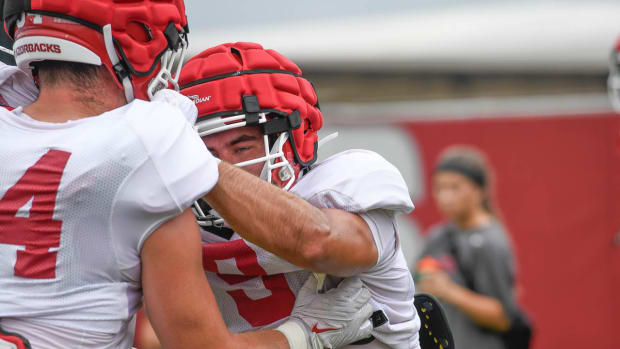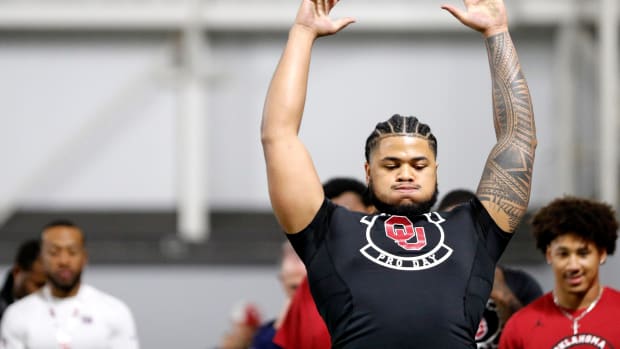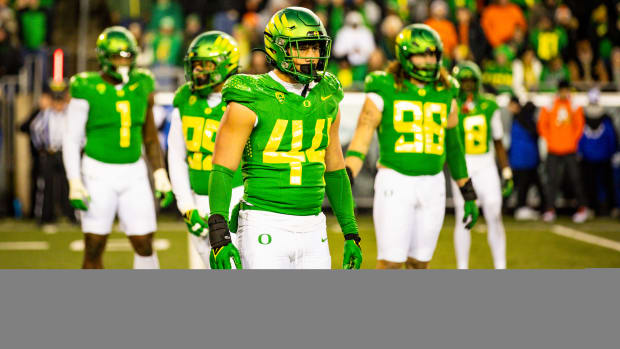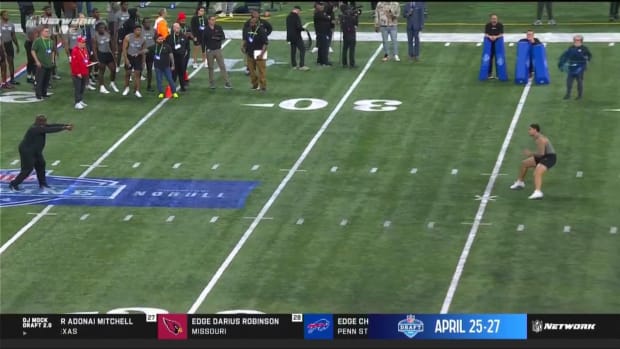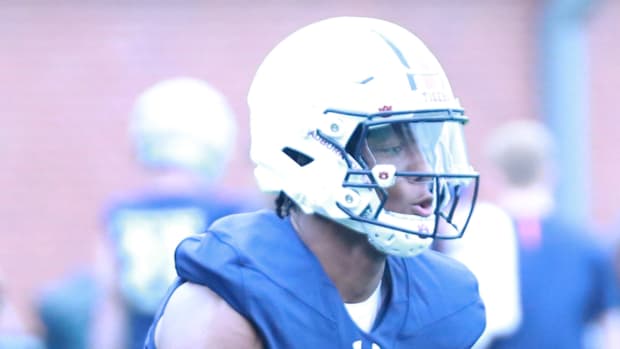After modernizing Pac-12, can Scott keep it competitive?
Larry Scott hits the first half of Stanford's game against Southern California before bouncing over to Berkeley for game two of his Saturday doubleheader.
California is hosting Texas and that game goes full (hash)Pac12AfterDark, running late into the night. That doesn't keep Scott from looking fresh and business casual the next day for an early breakfast at the top of Nob Hill in San Francisco. After that, another business meeting, and then back to Berkeley for a Harvard-Cal men's soccer before finally relaxing at his 14-year-old son's soccer match.
Scott always seems to be on to the next thing. In eight years as commissioner of the Pac-12, Scott has modernized and expanded a conference that had fallen far behind its competitors. With a $3 billion television contract and its own network, the Pac-12 has been transformed under Scott.
But what now?
The TV contract that once set records will be dwarfed by the Big Ten's new deal. The Pac-12 Network has not been the cash cow some expected to help the conference close the revenue gap between it and the Big Ten and Southeastern Conference.
Scott thinks long-term. He sees cord-cutting sports consumers and potential new markets in Asia. But on Pac-12 campuses, there are more immediate concerns for athletic directors who are trying to fill stadiums for all those night football games the conference plays and keep their coaches from being poached by other Power Five schools.
The conflict between the two has created some tension in the Pac-12 and some doubters in Scott.
''I think in our conference we've got to leverage the strengths we have on the West Coast, which is partly about innovation. Partly about being progressive. Partly about taking some risks, trying some things differently, because we don't have and won't have the same size fan bases and the same size markets as those we're trying to compete with. Plus, the time zone,'' Scott said in a recent interview with The Associated Press.
The biggest, riskiest play for Scott is the Pac-12 Network. The conference owns and operates the network, unlike the Big Ten, which partners with Fox on its network and the SEC, which partners with ESPN. Going it alone has limited the Pac-12 Network's reach and earning potential.
With the support of large and vocal fan bases who threatened to drop providers that would not carry their networks, the Big Ten and SEC were able to land deals with all the biggest cable and satellite TV providers.
Those deals have been far more difficult for the Pac-12 Network to secure. Most notably, DirecTV does not carry the Pac-12 Network.
According to a letter sent earlier this year from Washington State athletic director Bill Moos to boosters, Pac-12 schools received a $1.4 million payout from the network last year. Moos said in the letter, which was reported on by the Seattle Times, that Washington State was expecting $5 to $6 million.
Still, Scott calls the network, which airs on more events (850) than BTN or the SEC Network, ''Absolutely a success.''
''There's definitely room for it to be a bigger success,'' Scott said.
What's changing is people are watching less on their TVs, streaming programming through mobile devices and bypassing cable and satellite providers. The Pac-12's TV contract with ESPN and Fox runs through 2024 and gives those networks control of the conferences first- and second-tier media rights, which include most of the conference's best football and basketball games. Third-tier rights, essentially everything else, are owned by the schools and the Pac-12.
Scott believes that sets up the Pac-12 to capitalize on a changing market in which maybe DirecTV is less relevant and Facebook, Amazon and Twitter are major players.
The Pac-12 announced a deal earlier this year to stream Olympic sports on Twitter. It also signed a deal with Sling TV, which allows users to access television networks without a cable or satellite provider.
Scott hopes the DirecTV issue can be resolved. ''But the world is changing very rapidly and there will be plenty of other options,'' he said.
The Pac-12 distributed to its members about $25 million each for 2015. That payout is about $7 million short of what the SEC and Big Ten paid each of its members and even below the Big 12's record $30 million payout.
Scott, who made $4 million last year to make him the highest-paid college conference commissioner, said the revenue gap is an issue for the Pac-12, but as with most things he likes to pull back the lens.
''The thing that's often overlooked if you look at the typical athletics department budget for any particular school, the percentage of revenue that comes from the conference can range anywhere from 20 percent to 35 percent,'' Scott said. ''The ability for schools to compete has got a lot more to do with their market and what they're able to do locally than what happens through the conference, but whenever there's a dialogue about it it's always what the conferences are doing.''
According to financial records gathered by USA Today, there are 31 public schools that generated at least $90 million in athletic revenue in 2015. Only three (Oregon, Washington and UCLA) are from the Pac-12.
When Scott was hired away from the Women's Tennis Association - where he was CEO - by the then-Pac-10, part of his mandate was to engage the presidents and chancellors and create a strong board of directors. In the process, Scott acknowledges, he was not as attentive to the lines of communication with athletic directors.
Some of the strain played out publicly earlier this year when Scott called out UCLA athletic director Dan Guerrero for how he used the Pac-12's vote when the NCAA council was sorting through how to regulate so-called satellite football camps.
Scott said he has made an effort to keep ADs more involved, setting up dinner meetings with them before the presidents meet. ADs now receive the agendas of the presidents' meetings with the commissioner.
The AP made interview requests to all Pac-12 athletic directors other than USC's Lynn Swann, who has been in the job for less than a year. Some declined and others said they were unavailable. The three athletic directors who spoke to the AP, Oregon's Rob Mullens, Arizona State's Ray Anderson and Moos, voiced support for Scott and his vision for the conference. They also acknowledged their opinions are not necessarily shared by all of their colleagues.
''It is important to remember where this conference was,'' Mullens said.
Under Scott's predecessor, Tom Hansen, few Pac-12 football games were nationally televised. TV revenue was paltry compared to other major conferences and it was not shared equally. The teams that were on TV most made the most. The trade-off to get the game-changing money and more exposure was more Pac-12 football games being played at night, including Thursday and Friday nights.
Fans complain about night kickoffs and they can hurt attendance, but playing in the Pacific time zone allows ESPN and Fox to use Pac-12 games to fill late time slots.
''We were all made aware of this when we negotiated those television deals,'' Moos said. ''You're really not going to be able to command $3 billion for the conference by everybody playing in a 1:30 window on a Saturday afternoon for their football games.''
Anderson, who is in his third year at Arizona State after working as a vice president in the NFL, said he fully endorses Scott's strategy with the network.
''Become more of the way that consumers are getting our sports and, boom, maybe the landscape changes and we're now in a better position to start helping to reduce that (revenue) gap,'' Anderson said.
---
Follow Ralph D. Russo at www.Twitter.com/ralphDrussoAP
